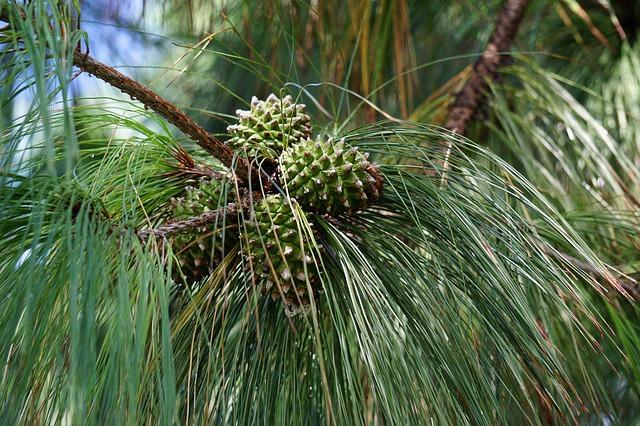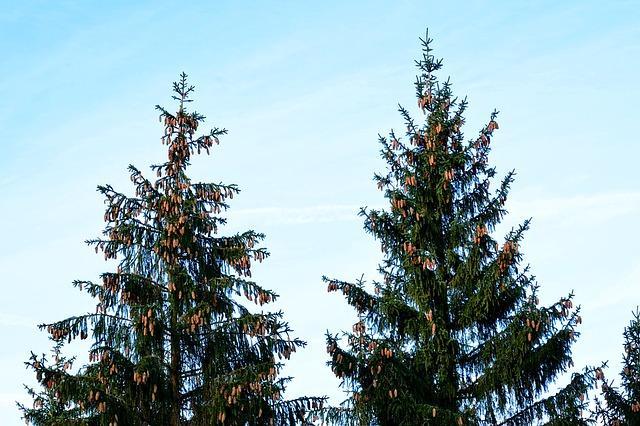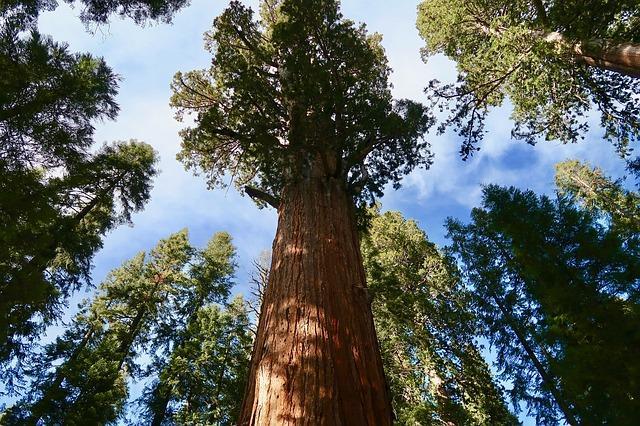What Are Gymnosperm Plants?


Spermatophyte plants are plants that produce and develop from seeds. They are divided into angiosperms and gymnosperms. The main difference between these two groups is that angiosperms are plants that bear flowers and fruits, while gymnosperms develop their seeds on the surface of scales or leaves. In other words, the seeds of the gymnosperms are not enclosed, unlike the seeds of flowering plants, which are enclosed by an ovary.
In the following article from thedailyECO, we explain what gymnosperms are, their main characteristics and differences from angiosperms.
What are gymnosperms?
Gymnosperms are plants that belong to the subkingdom Embophyta and are characterized by having seeds but no flowers. Since these plants do not have flowers, their seed is not protected by a fruit, and therefore they are also fruitless plants. Their name comes from the Greek: gymnos which means "naked" and sperma which means "seed".
Gymnosperms are plants that grow in virtually all areas of the world, but are especially dominant in cold and arctic climates, such as the taiga.
Gymnosperms are of great economic importance and are commonly used for the production of wood, paper, and resin. Other common uses for gymnosperms include articles such as soap, varnish, nail polish, chewing gum, and perfume. In some countries, these plants are also used as ornamentals, especially during the Christmas season.
We also owe gymnosperms the existence of petroleum, natural gas, and coal. Gymnosperms were an important component of vegetation that was compacted over millions of years into resources such as petroleum and coal.

Characteristics of gymnosperms
Their main characteristic, as mentioned earlier, is the production of a seed that does not develop in an ovary. This means that they are plants without flowers or fruits. Instead, the seeds sit on the surface of leaf-like structures called bracts. Some of the best known examples of these woody shrubs and trees are pines, spruces, firs and ginkgos.
Their flowers are a branch specialized to produce fertile leaves. The "flowers" of gymnosperms are called cones. Gymnosperms produce both male and female cones, each of which produces the gametes needed for fertilization; this makes them heterosporous. The megaspores formed in the cones develop into the female gametophytes in the ovules of the gymnosperms, while the pollen grains develop from the cones producing microspores.
Gymnosperms are very old plants. They are thought to have been the first vascular plants to inhabit the land, appearing in the Triassic period about 245-208 million years ago. The development of a vascular system capable of transporting water through the plant allowed gymnosperms to colonize the land.
In structure, they are woody plants with a tree-like appearance that have roots, stems, leaves, and seeds. Gymnosperms are seed plants adapted to life on land, which means they are vascular plants. They have vascular tissue that allows them to transport water and other resources from the roots to the leaves.
Reproduction of gymnosperms
As mentioned before, the cones form in the mature sporophyte of a plant. Within the male cones, male spores develop into male gametophytes. Each male gametophyte consists of several cells enclosed by a pollen grain. In female cones, female spores develop into female gametophytes. Each female gametophyte produces one egg in one ovule.
Pollination occurs when pollen is transferred by the wind from a male cone to a female cone. When the sperm moves from the pollen to an egg to perform fertilization, a diploid zygote is produced. The zygote becomes an embryo in a seed that develops from the egg in the female cone. When the seed germinates, it can develop into a mature sporophyte tree.
Examples of gymnosperm
Gymnosperms are scattered all over the world. Some of the most recognizable examples of these woody shrubs and trees include pines, spruces, firs, and ginkgoes. Currently, there are four different divisions of gymnosperms: Pinophyta, Cycadophyta, Ginkgophyta, and Gnetophyta. Together they include 88 genera and more than 1,000 species distributed throughout the world. Let us take a closer look at some examples of gymnosperms:
Pinophyta
Popularly known as conifers. They are the most numerous gymnosperms, with more than 600 species. They are evergreen and generally needle-shaped. Furthermore, they grow in all parts of the world, although they are most common in the boreal forests of the Northern Hemisphere. Their downward-pointing branches and specific biochemical properties provide frost resistance, which makes them well suited to cold climates. Some of them are:
- Pinaceae: pines, spruces, firs, cedars, larches or tsugas.
- Cupressaceae: junipers, cypress or sequoioideae.
- Aracauriaceae: taxaceae, a family of coniferous trees that includes the yews.
- Podocarpaceae: blue Mountains pine (Pherosphaera) and the creeping pine (Microcachrys tetragona).
Ginkgophyta
This group includes several extinct species and only one living species. This unique species is Ginkgo biloba, the scientific name also used as the English name. Ginkgo biloba, is found in the wild only in China, but is cultivated throughout the world.
Cycadophyta
Cycads are seed plants that typically have a stout and woody trunk with a crown of large, hard, stiff, evergreen and pinnate leaves, similar to palms. Common examples include:
- Sago palm (Cycas revoluta)
- Cardboard palm (Zamia furfuraceae)
Gnetophyta
It is a division of plants that consists of some 70 species across the three relict genera: Gnetum, Welwitschia, and Ephedra. They form tendrils or small bushes, with short stems and scaly leaves. Some examples include:
- Welwitschia mirabilis
- Gnetum (Gnetum gnemon)
- Sea grape (Ephedra distachya)

Main differences between gymnosperms and angiosperms
Angiosperms and gymnosperms are the two main groups of vascular seed plants. The angiosperms, the flowering plants, are the largest and most diverse group within the kingdom Plantae. The gymnosperms, on the other hand, are a smaller, older group. Let us take a closer look at their main differences:
- Angiosperms have seeds surrounded by fruits, while gymnosperms have naked seeds.
- Gymnosperms do not have the typical flowers of angiosperms, but usually have cones.
- Angiosperm leaves are often flat, while gymnosperm leaves are often pointed or needle-like.
- Angiosperms are typically seasonal plants, while gymnosperms tend to be perennial.
- The gymnosperms are older than the angiosperms on the evolutionary scale.
- While the angiosperms have an enormous variety of body shapes and types, the gymnosperms are mainly woody trees and shrubs.
- Both groups use pollen to facilitate pollination, although the angiosperms have an incredible variety of pollination strategies not found in the gymnosperms.
Examples of angiosperm plants
To help you understand how angiosperms differ from gymnosperms, we also provide some examples:
- Avocado (Persea americana)
- Sugarcane (Saccharum)
- Ginger (Zingiber officinale)
- Daisy (Bellis perennis)
- Barley (Hordeum vulgare)
- Peach (Prunus persica)
- Apple tree (Malus domestica)
- Orange (Citrus sinensis)
If you want to know more about gymnosperm plants, do not hesitate to watch the following video:

If you want to read similar articles to What Are Gymnosperm Plants?, we recommend you visit our Biology category.







